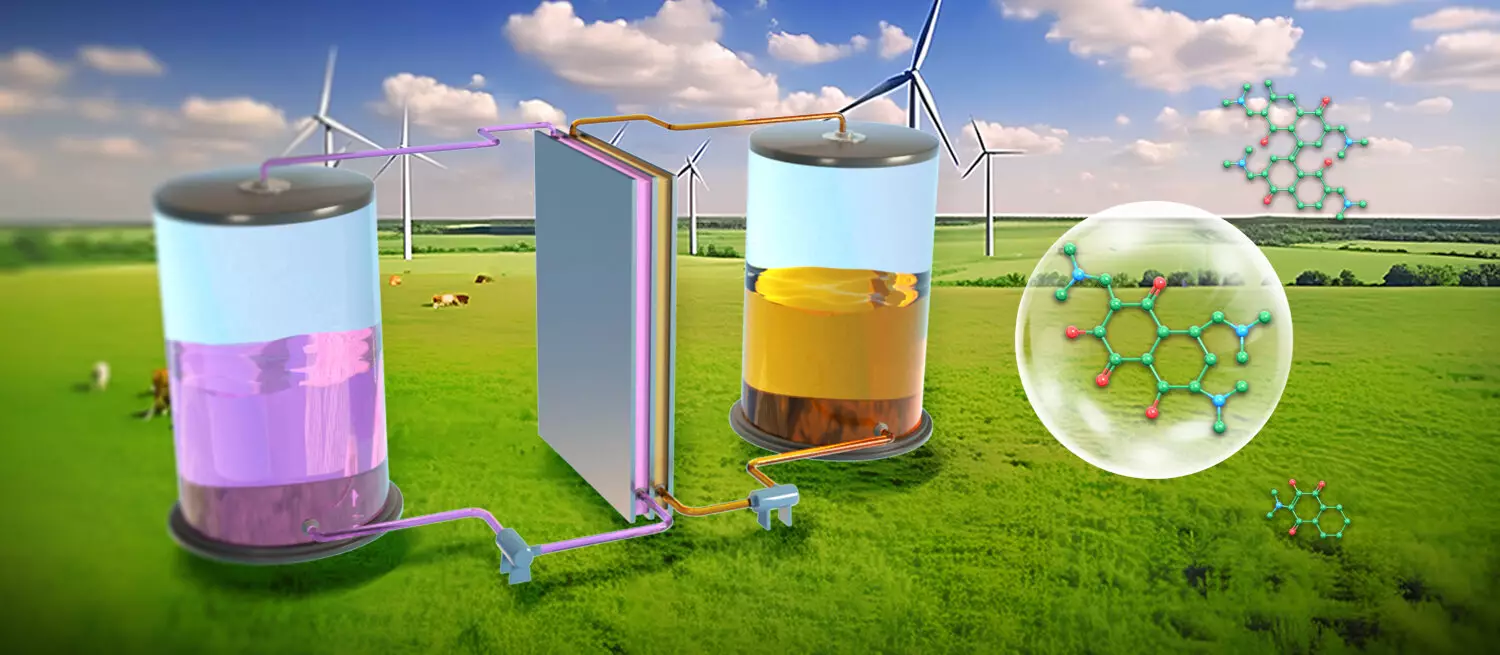Organic redox-active molecules (ORAMs) are emerging as a pivotal component in the landscape of renewable energy storage solutions. Their inherent abundance and diversity make them attractive for applications in aqueous organic flow batteries (AOFBs), which are crucial for efficient energy management systems. However, a significant roadblock remains: the stability of these molecules during the charge-discharge cycles. Side reactions not only deactivate ORAMs, rendering them ineffective but also complicate their practicality in real-world applications, particularly considering their susceptibility to atmospheric oxygen and moisture.
A recent study by a collaborative team led by Professors Li Xianfeng and Zhang Changkun from the Dalian Institute of Chemical Physics has propelled the development of ORAMs to new heights. This research introduced innovative naphthalene derivatives featuring active hydroxyl and dimethylamine structures. What sets these new compounds apart from their predecessors is their remarkable air stability, making them suitable candidates as catholytes in AOFBs. The findings, showcased in the prestigious journal *Nature Sustainability*, underline the potential of these derivatives to deliver consistent and reliable performance even in the presence of air.
The challenges associated with the instability of ORAMs and the prohibitive costs of their synthesis have hindered their wider adoption. Conventional methods often necessitate inert gas conditions during usage, which complicates system design and raises operational costs. The research team innovated by developing a scalable synthesis method for the naphthalene derivatives, utilizing a combination of chemical and in situ electrochemical techniques. This strategy streamlined purification processes and slashed the costs associated with molecule production, paving the way for more economically viable applications.
The performance of the newly developed naphthalene-based AOFBs has been nothing short of impressive. The systems demonstrated remarkable cycling capabilities, maintaining stable operational performance over 850 cycles, equating to approximately 40 days, with a substantial capacity of 50 Ah L-1. Notably, even under continual air exposure, these batteries sustained their functionality for around 600 cycles without significant loss in capacity or efficiency—a testament to their air stability.
What’s more, the researchers didn’t stop at lab-scale producibility; they successfully scaled the synthesis of these naphthalene derivatives to produce around 5 kg per batch, demonstrating that large-scale application is feasible. Pilot-scale battery systems incorporating these novel compounds displayed an average system capacity of 330 Ah, alongside outstanding cycling stability—achieving 270 cycles with an extraordinary capacity retention rate of 99.95%.
In light of these advancements, Prof. Li’s perspective that this research could usher in a new era in the development of air-stable molecules for sustainable electrochemical energy storage is profound. The integration of these stable, cost-effective ORAMs into energy systems represents not only a step forward in technology but also a promising pathway toward more sustainable energy solutions globally. The potential applications of these findings extend beyond mere battery storage, inviting numerous opportunities for innovation in energy management and utilization, thereby contributing significantly to the transition toward renewable energy sources.

